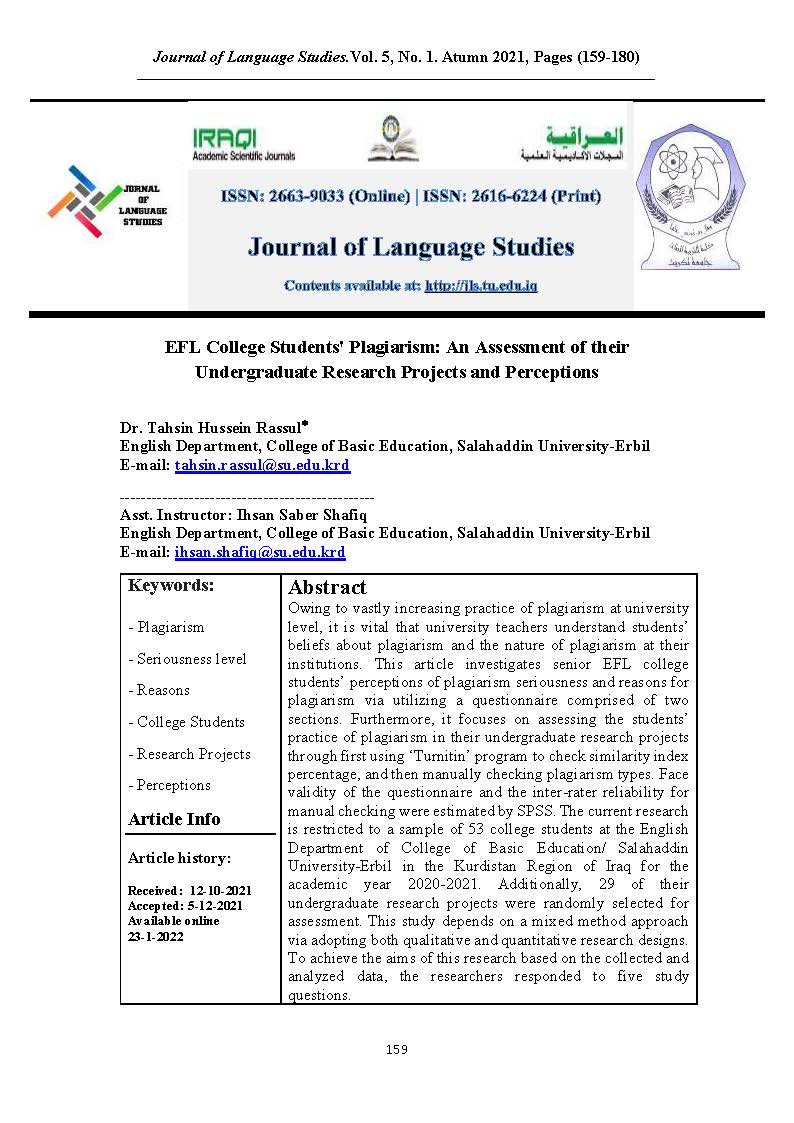EFL College Students' Plagiarism: An Assessment of their Undergraduate Research Projects and Perceptions
Tahsin Hussein Rassul
English Department, College of Basic Education, Salahaddin University-Erbil
Ihsan Saber Shafiq
English Department, College of Basic Education, Salahaddin University-Erbil
DOI: https://doi.org/10.25130/jls.5.1.12
Keywords: Plagiarism, Seriousness level, Reasons, College Students, Research Projects, Perceptions
Abstract
Owing to vastly increasing practice of plagiarism at university level, it is vital that university teachers understand students’ beliefs about plagiarism and the nature of plagiarism at their institutions. This article investigates senior EFL college students’ perceptions of plagiarism seriousness and reasons for plagiarism via utilizing a questionnaire comprised of two sections. Furthermore, it focuses on assessing the students’ practice of plagiarism in their undergraduate research projects through first using ‘Turnitin’ program to check similarity index percentage, and then manually checking plagiarism types. Face validity of the questionnaire and the inter-rater reliability for manual checking were estimated by SPSS. The current research is restricted to a sample of 53 college students at the English Department of College of Basic Education/ Salahaddin University-Erbil in the Kurdistan Region of Iraq for the academic year 2020-2021. Additionally, 29 of their undergraduate research projects were randomly selected for assessment. This study depends on a mixed method approach via adopting both qualitative and quantitative research designs. To achieve the aims of this research based on the collected and analyzed data, the researchers responded to five study questions. Results revealed that there is inconsistency in the similarity index percentage of their research projects. Moreover, not only were the practiced types of plagiarism found, but also the most common type of plagiarism was highlighted in their research projects. In addition, the students viewed some types of plagiarism as more serious ones based on the found mean of each type. Among 27 reasons, 14 reasons were considered as the most common reasons of plagiarism based on the found percentage. Finally, the study offered some recommendations for university teachers on how to improve students’ academic integrity and deter students from committing plagiarism acts in the future.

